Posts (page 47)
-
 3 min readIn Kotlin, objects are singleton instances of a class. They are defined using the "object" keyword instead of the "class" keyword. To get object support in Kotlin, you simply need to create an object using the "object" keyword and define the properties and methods needed for that object. Objects can also implement interfaces and extend classes like regular classes.
3 min readIn Kotlin, objects are singleton instances of a class. They are defined using the "object" keyword instead of the "class" keyword. To get object support in Kotlin, you simply need to create an object using the "object" keyword and define the properties and methods needed for that object. Objects can also implement interfaces and extend classes like regular classes.
-
 3 min readTo add a button event in a Kotlin fragment, you can follow these steps:In the fragment layout file (e.g. fragment_layout.xml), define a Button element with an ID that you can reference in your Kotlin code. In the Kotlin file for the fragment (e.g. MyFragment.kt), reference the button by using the findViewById() method and assign it to a variable. Set an onClickListener for the button variable by using the setOnClickListener() method.
3 min readTo add a button event in a Kotlin fragment, you can follow these steps:In the fragment layout file (e.g. fragment_layout.xml), define a Button element with an ID that you can reference in your Kotlin code. In the Kotlin file for the fragment (e.g. MyFragment.kt), reference the button by using the findViewById() method and assign it to a variable. Set an onClickListener for the button variable by using the setOnClickListener() method.
-
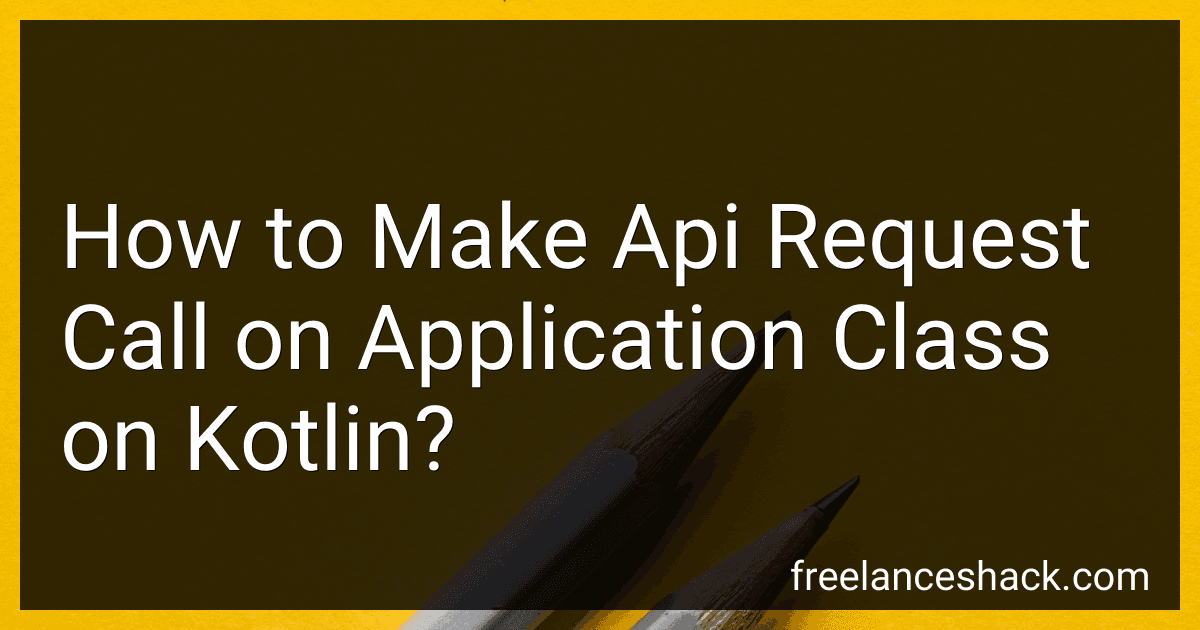 4 min readTo make an API request call in the application class in Kotlin, you can use libraries like Retrofit or OkHttp. First, create an instance of the Retrofit or OkHttpClient class in your application class. Then, create a service interface that defines the API endpoints and methods for making the requests. Finally, use the Retrofit or OkHttpClient instance to create and execute API requests in your application class.
4 min readTo make an API request call in the application class in Kotlin, you can use libraries like Retrofit or OkHttp. First, create an instance of the Retrofit or OkHttpClient class in your application class. Then, create a service interface that defines the API endpoints and methods for making the requests. Finally, use the Retrofit or OkHttpClient instance to create and execute API requests in your application class.
-
 6 min readTo use hours, minutes, and seconds in delay using Kotlin, you can create a delay function that takes the duration in milliseconds as a parameter. To convert hours, minutes, and seconds to milliseconds, you can use the following formula:delayInMillis = (hours * 3600000) + (minutes * 60000) + (seconds * 1000)You can then use this delayInMillis value as the parameter for the delay function to pause the execution of your code for the specified duration.
6 min readTo use hours, minutes, and seconds in delay using Kotlin, you can create a delay function that takes the duration in milliseconds as a parameter. To convert hours, minutes, and seconds to milliseconds, you can use the following formula:delayInMillis = (hours * 3600000) + (minutes * 60000) + (seconds * 1000)You can then use this delayInMillis value as the parameter for the delay function to pause the execution of your code for the specified duration.
-
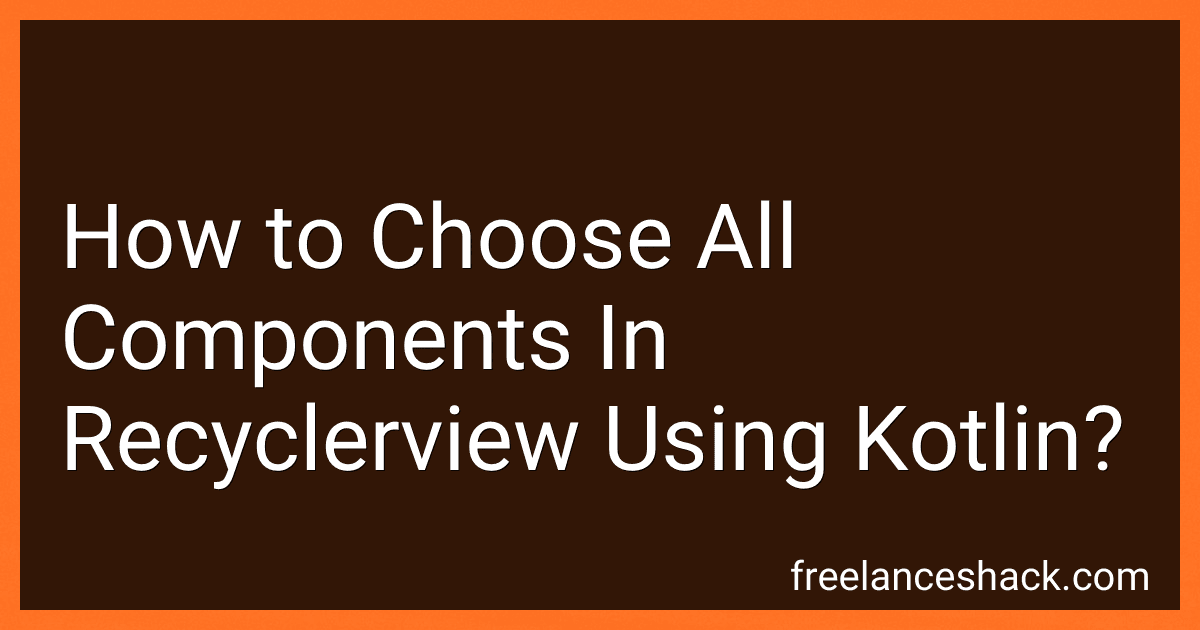 5 min readTo choose all components in a RecyclerView using Kotlin, you can iterate through all the items in the RecyclerView and select each one programmatically. You can achieve this by keeping track of the selected items in a list or set, and updating the selection status of each item as the user interacts with them.You can also implement a "Select All" button that, when clicked, selects all items in the RecyclerView by updating the selection status of each item.
5 min readTo choose all components in a RecyclerView using Kotlin, you can iterate through all the items in the RecyclerView and select each one programmatically. You can achieve this by keeping track of the selected items in a list or set, and updating the selection status of each item as the user interacts with them.You can also implement a "Select All" button that, when clicked, selects all items in the RecyclerView by updating the selection status of each item.
-
 6 min readTo make a download progress indicator in Kotlin, you can use a ProgressBar view in your layout file to visually represent the progress of the download. In your Kotlin code, you can update the progress of the download by setting the progress attribute of the ProgressBar view. You can track the progress of the download by using a download manager or by calculating the percentage of the file downloaded.
6 min readTo make a download progress indicator in Kotlin, you can use a ProgressBar view in your layout file to visually represent the progress of the download. In your Kotlin code, you can update the progress of the download by setting the progress attribute of the ProgressBar view. You can track the progress of the download by using a download manager or by calculating the percentage of the file downloaded.
-
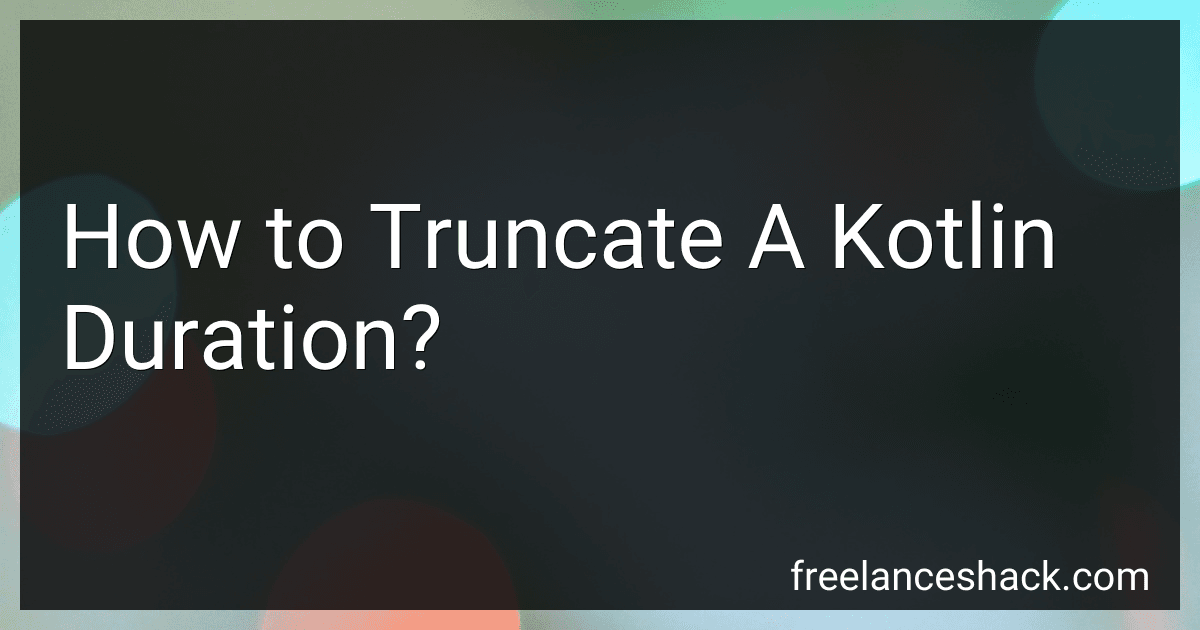 5 min readTo truncate a Kotlin Duration, you can use the toComponents() function to break down the duration into its individual components like days, hours, minutes, seconds, and milliseconds. You can then create a new Duration object using the truncated components to get the desired truncated duration. Another option is to convert the duration to milliseconds, truncate the milliseconds as needed, and then convert it back to a Duration object.
5 min readTo truncate a Kotlin Duration, you can use the toComponents() function to break down the duration into its individual components like days, hours, minutes, seconds, and milliseconds. You can then create a new Duration object using the truncated components to get the desired truncated duration. Another option is to convert the duration to milliseconds, truncate the milliseconds as needed, and then convert it back to a Duration object.
-
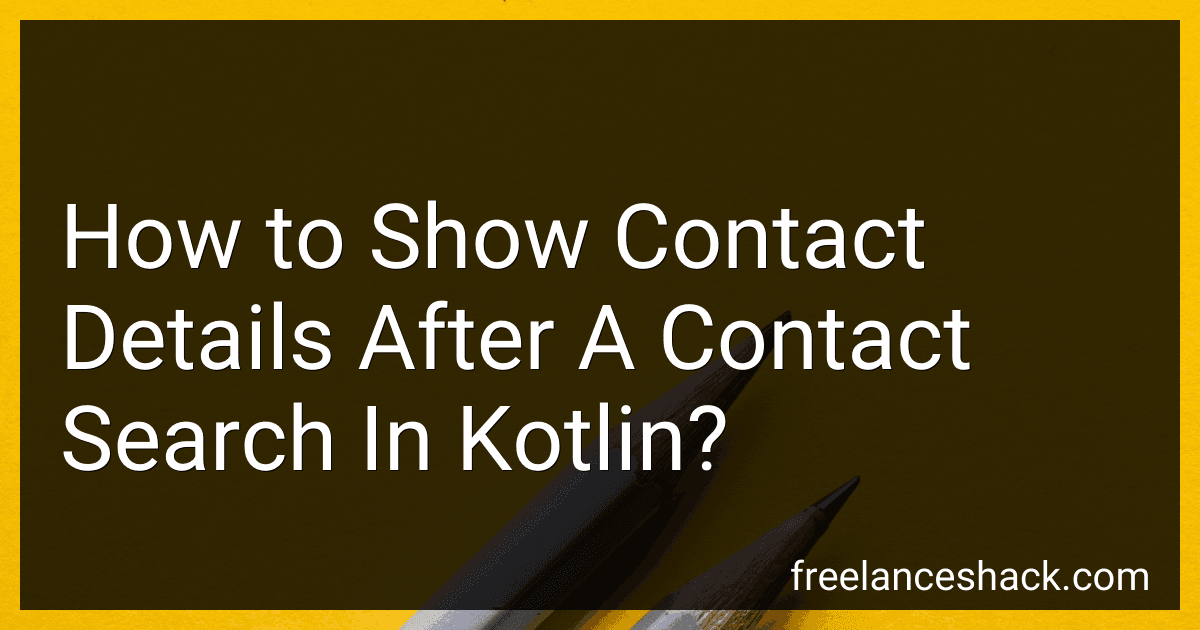 4 min readTo show contact details after a contact search in Kotlin, you can use the ContactsContract API to query the device's contact database based on the search input. Once you have retrieved the contact details, you can display the relevant information such as the contact's name, phone number, email address, etc. on the screen using TextViews or other UI components. You can also provide options for the user to perform actions such as calling or messaging the contact directly from your app.
4 min readTo show contact details after a contact search in Kotlin, you can use the ContactsContract API to query the device's contact database based on the search input. Once you have retrieved the contact details, you can display the relevant information such as the contact's name, phone number, email address, etc. on the screen using TextViews or other UI components. You can also provide options for the user to perform actions such as calling or messaging the contact directly from your app.
-
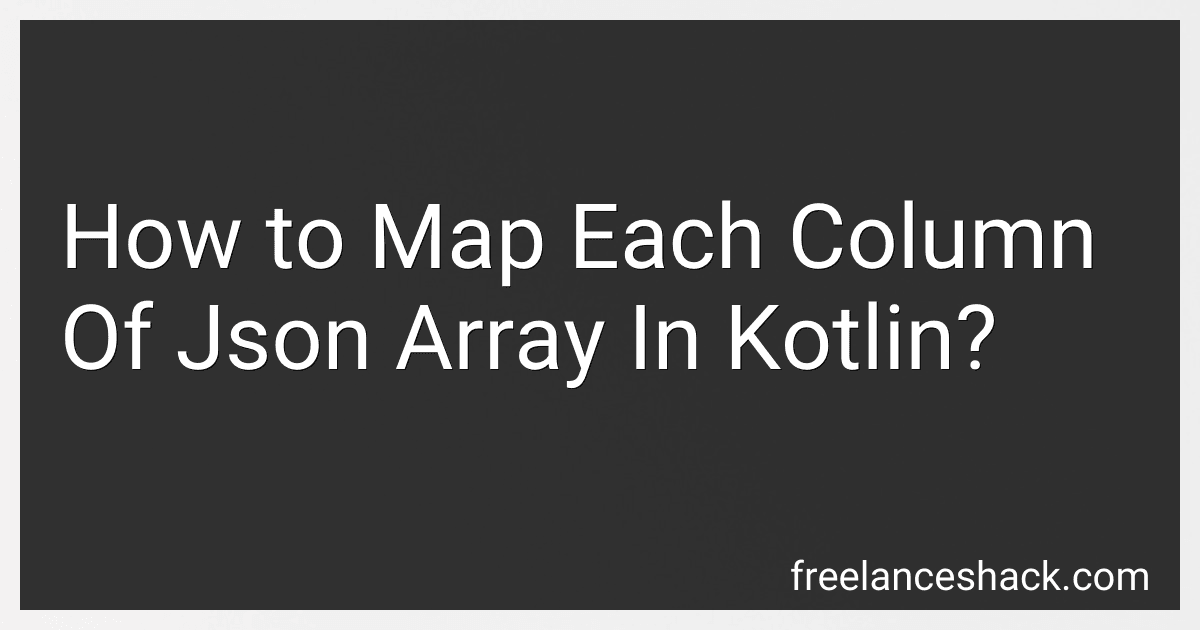 3 min readTo map each column of a JSON array in Kotlin, you can use the Gson library to parse the JSON string into a data class representing the structure of the JSON object. You can then iterate over the array and access each column by its corresponding property in the data class. Alternatively, you can use the kotlinx.serialization library to deserialize the JSON string into a Kotlin data class.
3 min readTo map each column of a JSON array in Kotlin, you can use the Gson library to parse the JSON string into a data class representing the structure of the JSON object. You can then iterate over the array and access each column by its corresponding property in the data class. Alternatively, you can use the kotlinx.serialization library to deserialize the JSON string into a Kotlin data class.
-
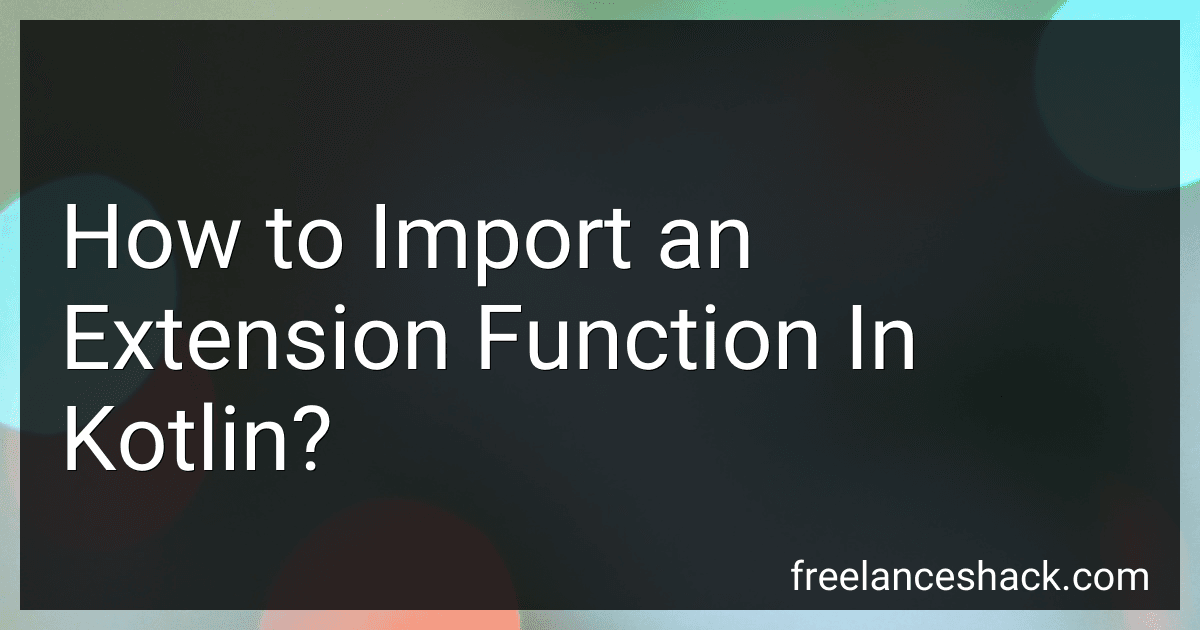 6 min readIn order to import an extension function in Kotlin, you need to define the function as an extension function in a separate file or within the same file where you plan to use it. The extension function should be defined with the receiver type specified before the function name.Once the extension function is defined, you can import it in a different file by using the import statement followed by the fully qualified name of the file containing the extension function.
6 min readIn order to import an extension function in Kotlin, you need to define the function as an extension function in a separate file or within the same file where you plan to use it. The extension function should be defined with the receiver type specified before the function name.Once the extension function is defined, you can import it in a different file by using the import statement followed by the fully qualified name of the file containing the extension function.
-
 6 min readIn Kotlin, to get a data class value given another one, you can use the componentN() functions generated automatically for data classes. These functions allow you to access the properties of the data class based on their index. For example, if you have a data class called Person with properties name and age, you can get the age of a person by calling person.component2(). This will return the value of the age property for the given Person object.
6 min readIn Kotlin, to get a data class value given another one, you can use the componentN() functions generated automatically for data classes. These functions allow you to access the properties of the data class based on their index. For example, if you have a data class called Person with properties name and age, you can get the age of a person by calling person.component2(). This will return the value of the age property for the given Person object.
-
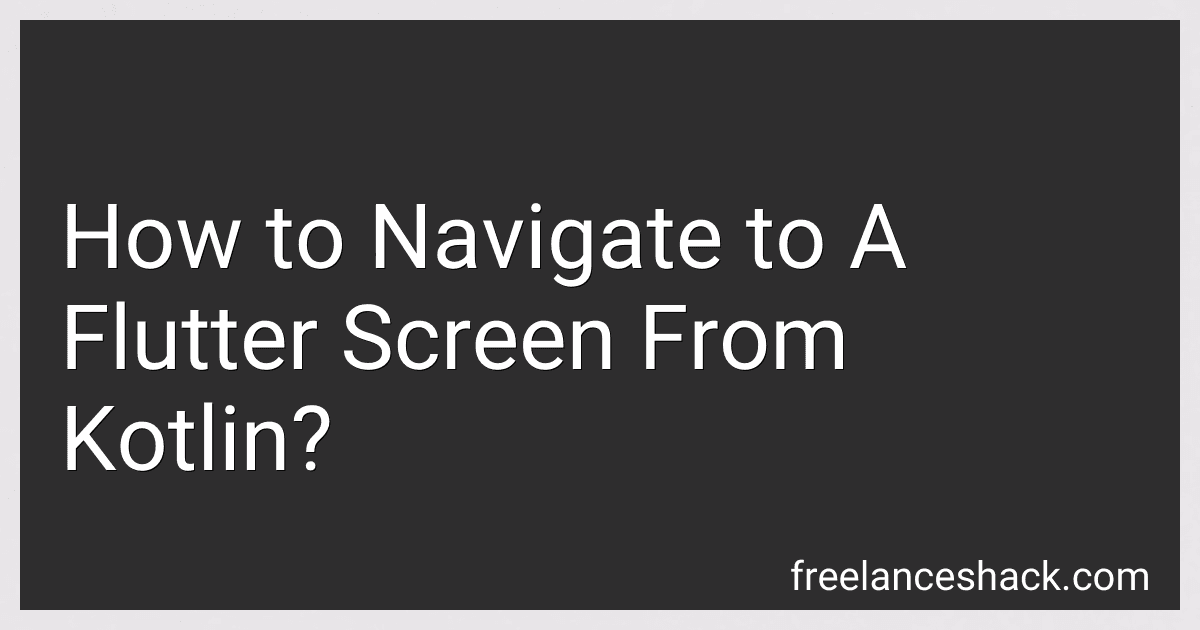 6 min readTo navigate to a Flutter screen from Kotlin, you can use platform channels to communicate between the two platforms. By creating a method channel in Flutter and invoking it from Kotlin, you can trigger navigation to a new Flutter screen. Make sure to handle any data or parameters that need to be passed between the two platforms during the navigation process. This approach allows for seamless navigation between Kotlin and Flutter screens within a single mobile application.
6 min readTo navigate to a Flutter screen from Kotlin, you can use platform channels to communicate between the two platforms. By creating a method channel in Flutter and invoking it from Kotlin, you can trigger navigation to a new Flutter screen. Make sure to handle any data or parameters that need to be passed between the two platforms during the navigation process. This approach allows for seamless navigation between Kotlin and Flutter screens within a single mobile application.